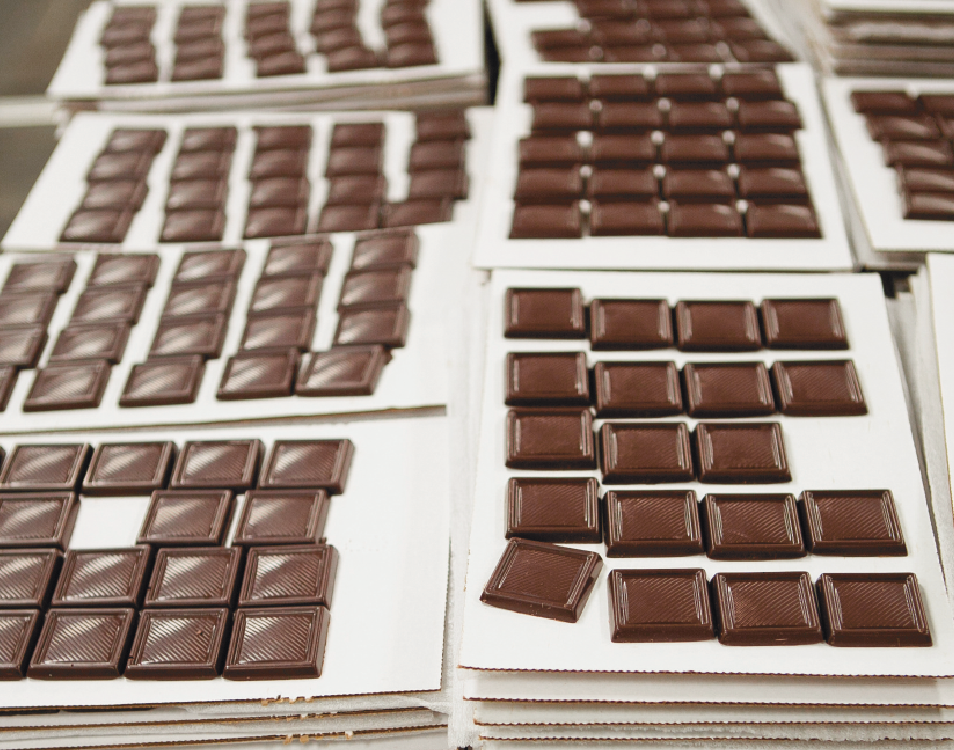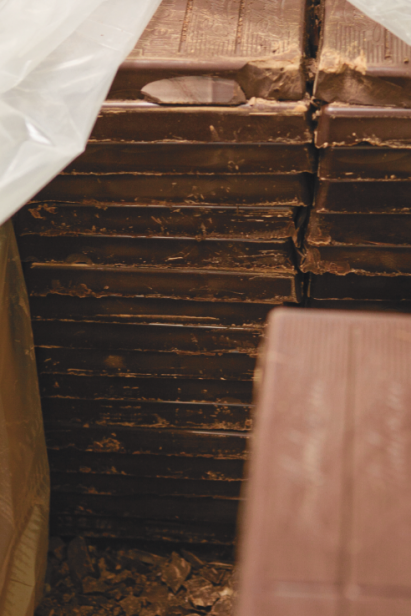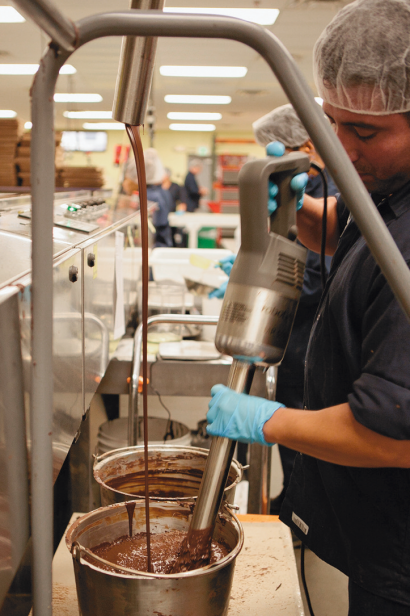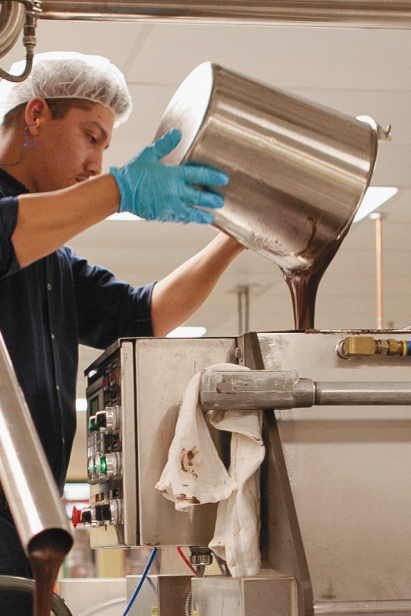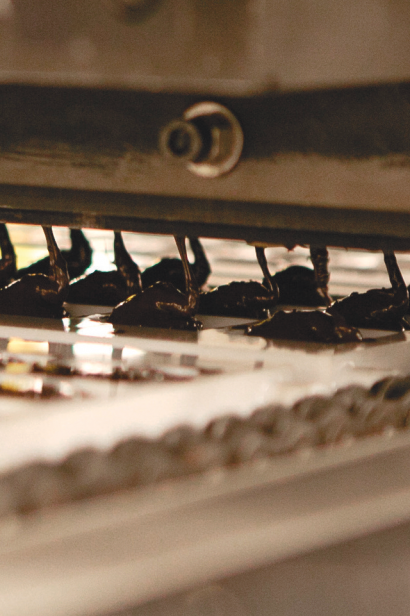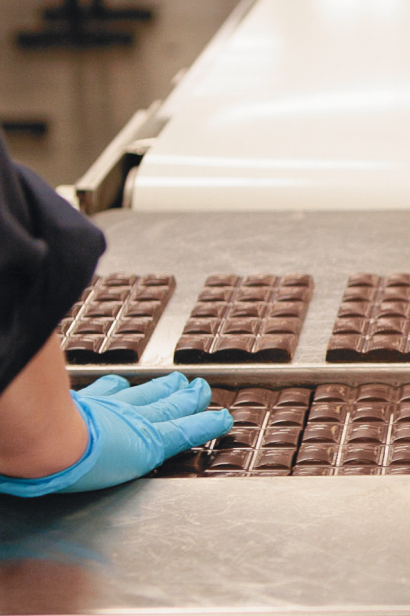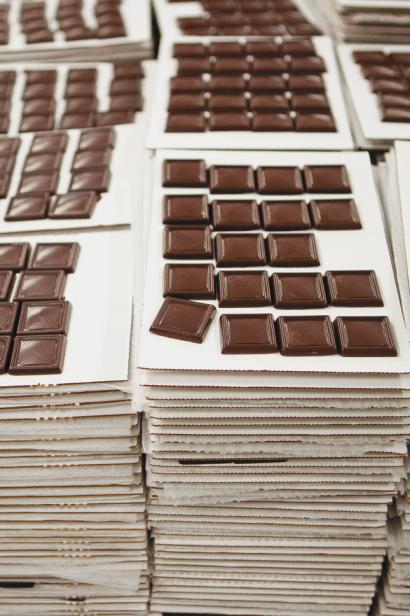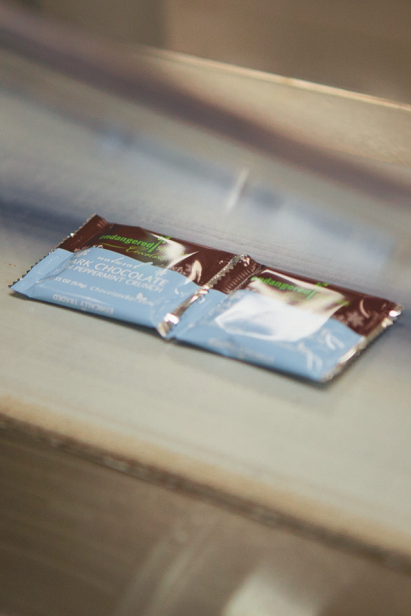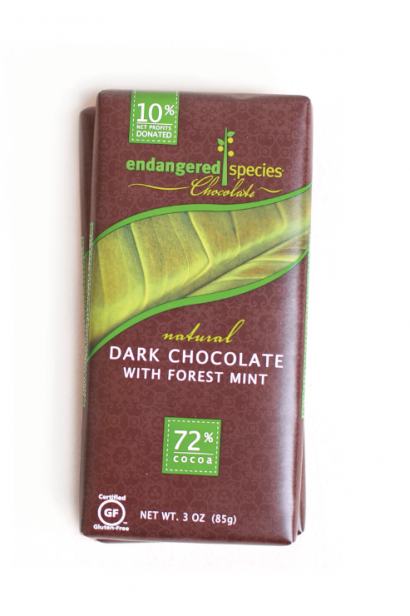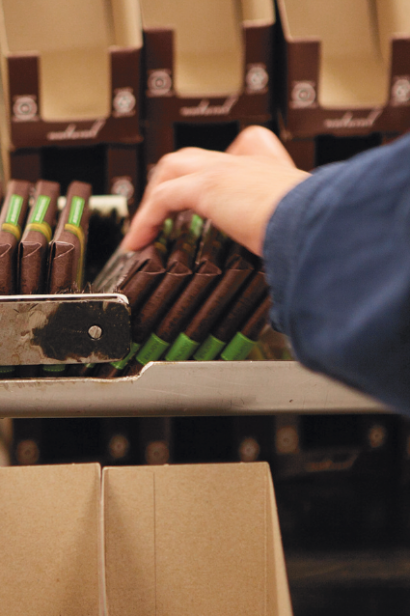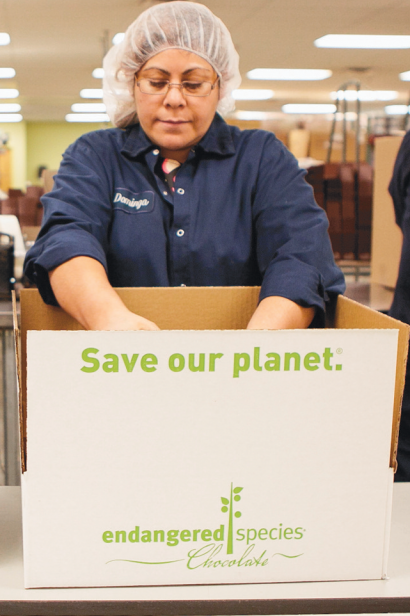Sweet Spot: The Endangered Species Chocolate Factory
Endangered Species makes dozens of varieties – most of them dark chocolate with 70% or higher cocao content and some of them organic – flecked with espresso beans, goji berry, hazelnut toffee and more. Edible Indy dropped in on a day when two chocolates were being made: bars of dark chocolate with mint, and individually wrapped squares of dark chocolate with peppermint crunch, a holiday specialty.
Melting & Mixing. The blocks are melted down in stainless-steel tempers. Once melted, inclusions—such as the mint flavor in the holiday tiles or the cranberries and almonds found in one of their most popular bars—are added to the mix. Although it’s hard to imagine something that wouldn’t taste better in chocolate, Larry Phillips, director of production and resident chocolatier, says pineapple and chile pepper were two test kitchen ideas that ultimately did not make it to production.
Molding & Cooling. Here, the chocolate is poured into molds to cool and harden. Endangered Species Chocolate reuses and washes the molds with a wind-powered, recycled-water washer.
Not only does the chocolate have a minimal carbon footprint, it’s also certified vegan and gluten-free, and all truck delivery routes are planned for maximum efficiency.
Inspecting & Sorting. Cooled chocolate travels down a conveyor belt for quality control. Workers inspect the chocolate, and each piece passes through a metal detector to make sure no unwanted inclusions were accidentally added. Other chocolate manufacturers who source their cacao in conflict zones have been known to find bullets in their chocolate.
Packaging. Endangered Species’ product labels are Forest Stewardship Council Certified and use recycled materials, water-based inks and chlorine-free bleaching. Each bar features a unique endangered species in its design.
The finished, wrapped and packaged chocolate will make its way to stores and distributors.


